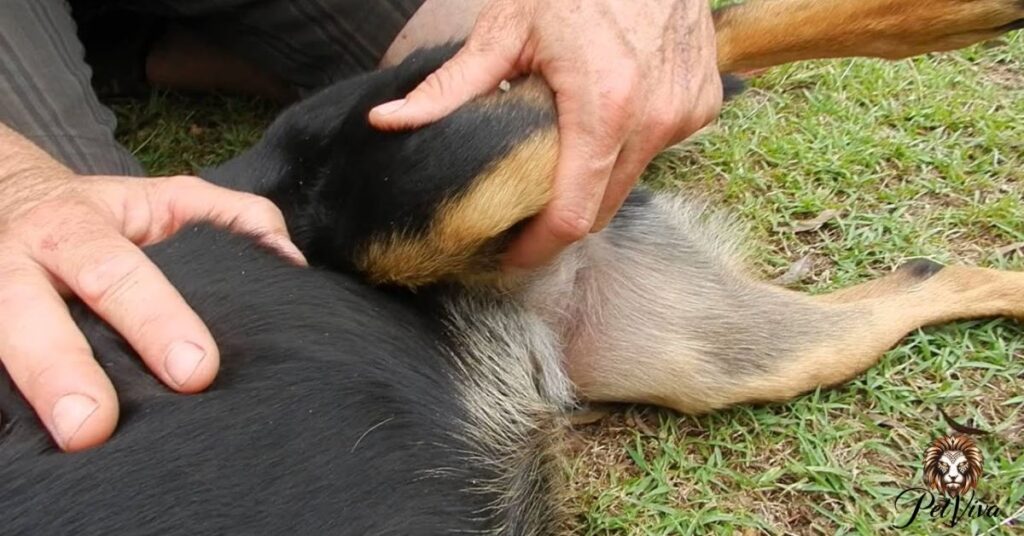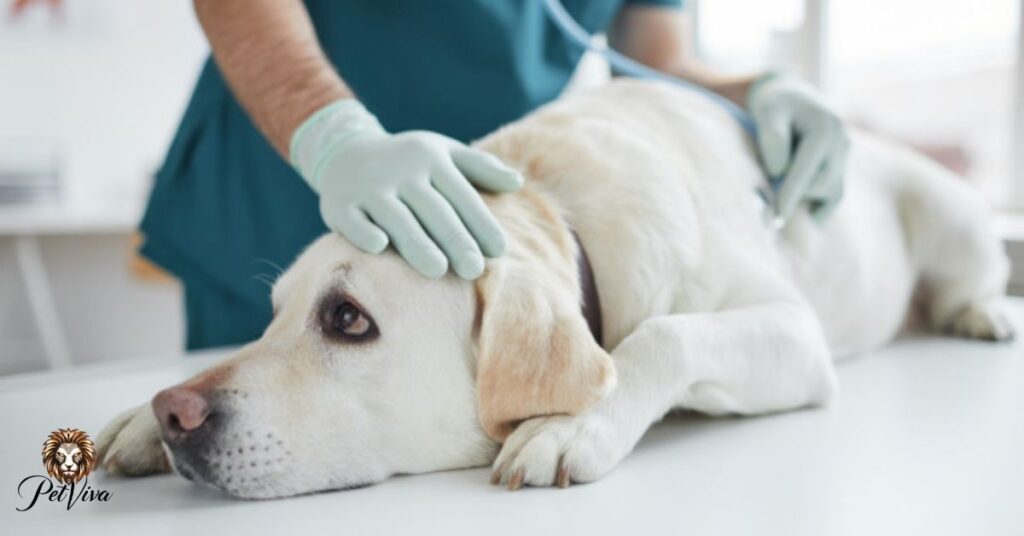The dog is limping on their back leg. It could be due to various reasons such as injury, arthritis or joint disease. It’s essential to observe their behavior and seek veterinary attention to determine the cause and appropriate treatment.
Dog favoring one of their back legs? It could be a sign of discomfort or injury. Understanding why is my dog limping back leg is crucial for their health and well-being. what you can do to help your furry friend feel better.
Limping on a back leg in dogs could indicate injury arthritis or joint issues. It’s important to consult a veterinarian for proper diagnosis and treatment.
Ruptured ACL (Anterior cruciate ligament)
A ruptured ACL or anterior cruciate ligament, is a common injury among dogs, especially larger breeds. It typically occurs due to sudden twisting or overextension of the knee joint. Dogs with a ruptured ACL often show signs of lameness difficulty bearing weight on the affected leg and swelling around the knee joint.
Treatment for a ruptured ACL in dogs may involve surgical intervention to repair or stabilize the ligament along with pain management and physical therapy. Without proper treatment a ruptured ACL can lead to chronic pain joint instability and osteoarthritis. It’s essential for pet owners to seek veterinary care promptly if they suspect their dog has suffered a ruptured ACL to ensure the best possible outcome for their pet’s mobility and comfort.
Also read this: IS YOUR FRENCHIE SHAKING? HERE’S WHAT YOU NEED TO KNOW
Strain or sprain

A strain or sprain in dogs typically occurs when there is overstretching or tearing of ligaments tendons or muscles. This can happen during vigorous activity sudden movements or accidents. Dogs with a strain or sprain may exhibit signs of lameness, pain, swelling and reluctance to bear weight on the affected limb.
Treatment for a strain or sprain in dogs often involves rest, pain management and possibly physical therapy to promote healing and prevent further injury. In severe cases veterinary intervention may be necessary, including medication supportive devices or surgery. Pet owners should monitor their dog closely for any signs of discomfort and seek veterinary attention if the symptoms persist or worsen, ensuring prompt and appropriate care for their furry companion’s recovery.
Also read this: HOW OFTEN DO FRENCH BULLDOGS GO INTO HEAT: A COMPREHENSIVE GUIDE
IVDD (Intervertebral Disc Disease)
Intervertebral Disc Disease (IVDD) is a common spinal condition in dogs particularly those with long backs like Dachshunds and Corgis. It occurs when the discs between the vertebrae degenerate, leading to compression or herniation of the spinal cord. Dogs with IVDD may experience symptoms such as back pain, hind limb weakness, loss of coordination, and even paralysis.
Treatment for IVDD depends on the severity of the condition and may include medication, rest physical therapy or surgery. In mild cases conservative management can help alleviate symptoms and prevent further deterioration. However severe cases may require surgical intervention to decompress the spinal cord and relieve pressure. Pet owners should consult with a veterinarian if they notice any signs of IVDD in their dog as diagnosis and appropriate treatment are crucial for managing this potentially debilitating condition.
Fracture/dislocation
Fractures and dislocations in dogs occur when there is a break or misalignment of bones or joints, often resulting from trauma or injury. These can cause significant pain and lameness in affected dogs along with swelling and visible deformity in the affected area.
Treatment for fractures and dislocations in dogs may involve immobilization with splints or casts, surgical repair, or realignment of the bones or joints. Pain management and rehabilitation therapy may also be necessary to aid in the healing process and restore mobility.
Iliopsoas muscle injury

An iliopsoas muscle injury in dogs occurs when there is strain or tearing of the iliopsoas muscle, which is located in the hip region. This injury is often caused by overexertion, sudden movements, or repetitive strain especially in active dogs. Dogs with an iliopsoas muscle injury may exhibit symptoms such as lameness difficulty rising reluctance to jump or climb stairs and sensitivity in the hip area.
Treatment for an iliopsoas muscle injury in dogs typically involves rest anti-inflammatory medication and physical therapy to reduce pain and promote healing. In severe cases, veterinary may be necessary, including more aggressive pain management or even surgical repair. Pet owners should monitor their dog closely for any signs of discomfort or worsening
Notable Mention – Osteosarcoma

Osteosarcoma is a type of bone cancer that commonly affects dogs, particularly giant breeds. It usually occurs in the long bones of the limbs such as the leg bones but can also affect other bones. Osteosarcoma is aggressive and can metastasize to other parts of the body making early detection and treatment crucial.
Symptoms of osteosarcoma in dogs may include lameness swelling or pain in the affected limb, and reluctance to bear weight on the affected leg. Diagnosis typically involves imaging tests like X-rays or CT scans, followed by a biopsy to confirm the presence of cancer cells. Treatment options for osteosarcoma may include amputation of the affected limb chemotherapy and palliative care to manage pain and improve quality of life.
Why is My Dog Limping? 6 Possible Causes.
Broken Leg: Fractures or breaks in a dog’s leg can cause significant pain and limping.
Torn ACL: A ruptured anterior cruciate ligament is a common cause of limping in dogs, often requiring surgical intervention.
Something Stuck in Their Paw: Foreign objects like glass or thorns can cause discomfort and limping in dogs.
Broken Toenail: A broken toenail can lead to lameness and should be treated promptly by a veterinarian.
Hip Dysplasia: This genetic condition affects the hip joints and can cause pain and difficulty walking.
Arthritis: Degenerative joint disease can lead to stiffness pain and limping in dogs particularly as they age.
Frequently asked question
What to do if my dog is limping on his back leg?
Take your dog to the vet for a thorough examination and proper diagnosis.
Can a dog limp heal on its own?
Some minor limps may improve with rest, but it’s best to consult a vet for proper evaluation and treatment.
When should I take my dog to the vet for limping?
Take your dog to the vet if the limp persists for more than a day or if there’s swelling, severe pain, or inability to bear weight.
Why is my dog not walking on his back leg but no pain?
Your dog may have a neurological issue or a muscle injury, so it’s best to consult a vet for a proper diagnosis.
Conclusion
Why is my dog limping back leg can be indicative of various underlying issues, ranging from minor injuries to serious conditions like fractures or arthritis. It’s crucial for pet owners to pay close attention to their dog’s limping behavior and seek veterinary attention promptly to determine the cause and appropriate treatment. Ignoring Limping can exacerbate the problem and lead to further complications potentially compromising the dog’s quality of life.
By consulting with a veterinarian pet owners can receive a proper diagnosis and tailored treatment plan to address their dog’s specific needs. Whether it’s rest medication physical therapy or surgical intervention early intervention can greatly improve the prognosis and ensure the best possible outcome for the dog’s mobility and overall well-being.







